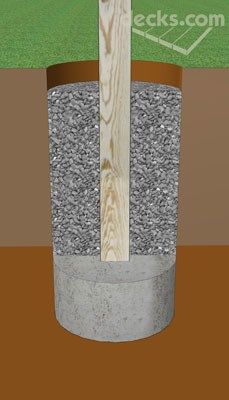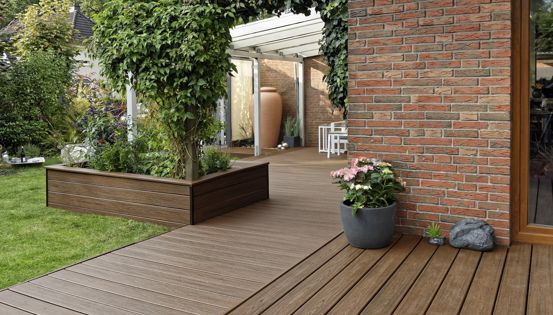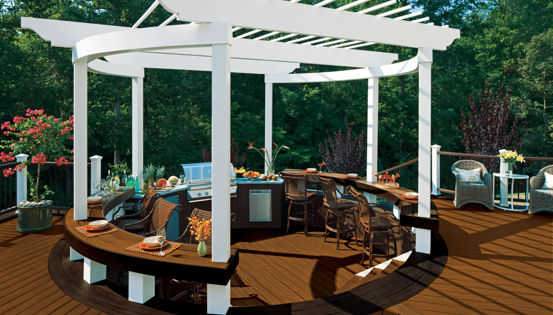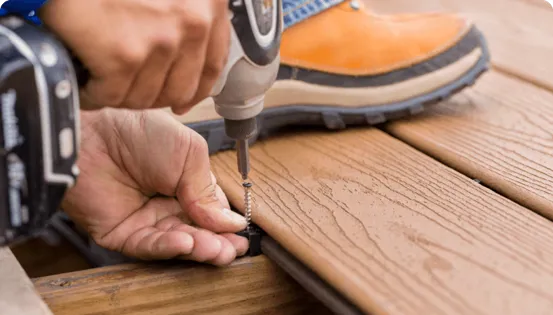This footing method involves pouring a concrete pad at least 12” thick at the base of your hole. Next, set a pressure treated wood support post rated for "ground contact" on top of the pad and backfill the soil into the hole. "Ground rated" treated wood contains a higher concentration of preservative chemicals than normal wood and will offer increased protection from decay while buried in soil. This is the same type of wood that is used for retaining walls. The pressure treatment companies insist that these posts will last longer in the ground than the deck frame that is built above it, and this practice is accepted by the IRC code.
The buried post method offers the advantage of reducing the amount of concrete work required for each footing and actually provides additional lateral (side-to-side) support to the post to resist wind loads. It also reduces the amount of soil you need to haul away and can save you some money because you no longer need concrete anchors and post base hardware. The only obvious disadvantage is that if the post is ever damaged, it will be very difficult to replace.







